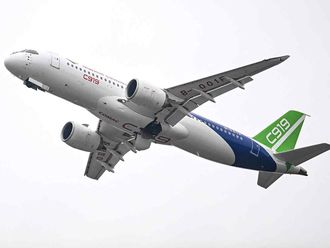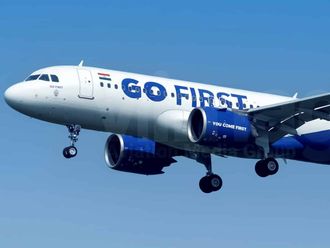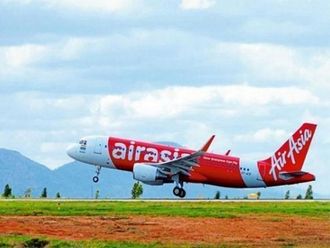
Dubai: Air traffic in the UAE grew by 10.6 per cent in April compared to the same period in 2009 despite a decrease in global movement due to flight disruptions in Europe caused by volcanic activity in Iceland, a report by the UAE General Civil Aviation Authority (GCAA) said..
Flights reached 52,300 compared to 47,300 last year.
The average growth of air traffic from January to April 2010 was 11.5 per cent.
Diverse operation
Saif Mohammad Al Suwaidi, Director General, GCAA said: "Stability and growth characterised air operations in the UAE in spite of the clear effects of ash clouds from the active volcano in Iceland on air operations worldwide last month. This is attributed to the diverse operations with no focus on one region, the ability to find appropriate alternative in emergencies and the advanced legislative and legal framework in relation to aviation security, air safety and regulation of air traffic in the UAE." Dubai ranked first with 45.3 per cent of total UAE air traffic, followed by transit flights at 22 per cent while Abu Dhabi ranked third at 14.6 per cent. Sharjah was fourth with 10 per cent while local flights between UAE airports in fifth with 6.4 per cent.
The increased air traffic came amid a 29 per cent increase in Middle East to Far East premium travel in March 2010 compared to the same period in 2009, according to a recent report by International Air Transport Authority (IATA), which represents some 230 airlines.
Premium traffic grew by 28.3 per cent from the Middle East to Southwest Pacific, 12.7 per cent from Europe to the Middle East, 13 per cent from Africa to the Middle East, and 9 per cent within the Middle East.
Premium traffic to the Middle East continued to show "strong growth," according to the IATA, partly because of economic growth in the region but also market share gains by Middle Eastern airlines on long-haul flights connecting over their Middle East hubs, the report indicated.
Emirates indicated that its West Asia and Indian Ocean routes showed stronger revenue growth over other regions, according the Emirates Group Annual Report for 2009-2010.
Reflecting the increase in UAE's air traffic, Emirates took delivery of 15 aircraft in the financial year.
The airlines has an order book of 146 aircraft worth $48 billion.
This year it is recruiting 5,000 people to add to its current staff strength of 49, 950.
Globally, the number of passengers traveling business class seats on international markets rose by 7.6 per cent in the first quarter of 2010, compared to the same period last year and 10.8 per cent in March 2010 from the same levels in 2009, according to the IATA report.
Economy travel rose by 7.4 per cent in the first quarter of 2010 and 8.8 per cent in March compared to last year.
Despite this growth, the volcanic ash disruptions to air operations has put a dent in overall international travel by about 4 per cent, according to IATA.
Environment: Carbon offset project
Expert carbon management team within Masdar will help support the voluntary carbon offset programmes of Etihad in sourcing and retiring high quality carbon credits. These will come from projects such as alternative energy programmes and energy efficiency initiatives.
Etihad is currently working on the methodologies for calculating the carbon footprint of its operations, including those from ground facilities and transportation. Once this is complete, Etihad will develop a strategy to offset a proportion of its emissions to reduce its carbon footprint.
James Hogan, Etihad Airways' Chief Executive Officer, said: "Etihad is committed to reducing its carbon emissions and to work with our colleagues at Masdar on this important area of the business is particularly pleasing.
"There are a number of world class carbon reduction projects on offer in the Middle East region and the carbon credits that Etihad purchases through Masdar will make a considerable contribution to these activities." Etihad and Masdar signed an initial agreement in 2009 which has seen greater cooperation between the two Abu Dhabi-based companies with the aim of reducing the airline's carbon footprint. One of these initiatives is the sustainable bioenergy research project that was launched in January 2010. The project is also supported by Boeing and Honeywell's UOP.












